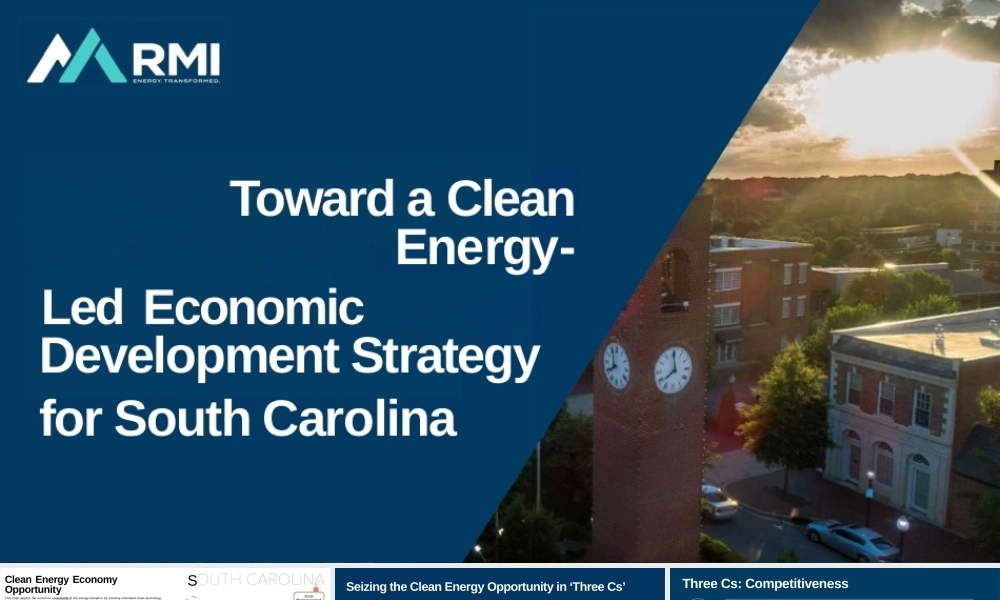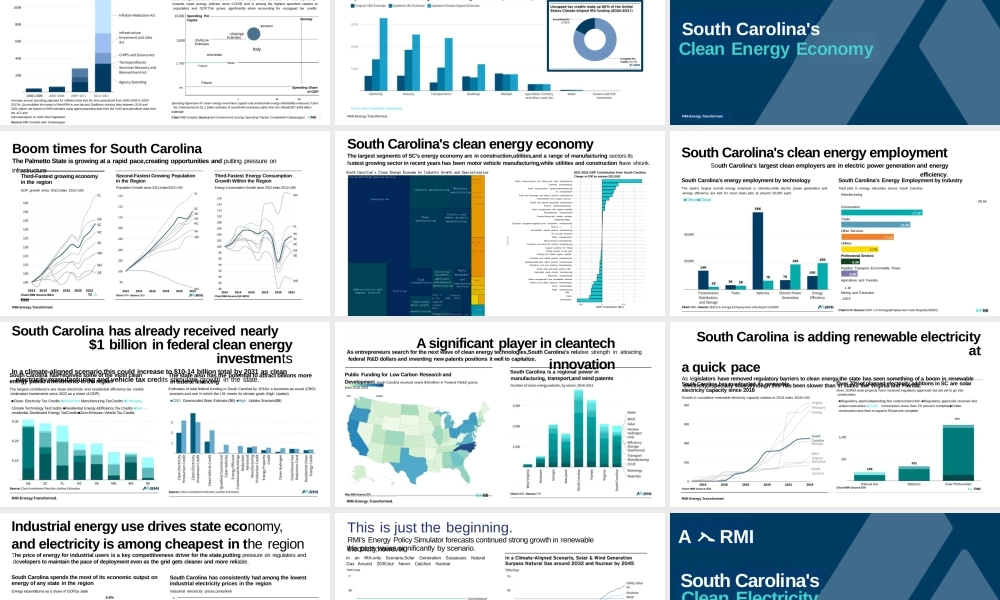Toward a Clean Energy-Led EconomicDevelopment Strategyfor South CarolinaElectricity 24 Industry 20 Transportation 33 Buildings 4Size of bars based on current annual greenhouse gas emissions (million metric tons CO₂e)HUMAN N a,n c o if mn AFE nti iIMPACT JOBS AVOIDED DEATHS Attacks Investment from IRATh d tfthN tAitd thEP l Siltdt littht tlid lAddtlittl/ t thialnerodiFlalBot1aLYtRhY,1dl30,000Commercial BuildingsCleanFuels12,000FastChargersMOREE-Bikes andWalkableCOMMUNITIESClean Energy Economy OpportunityThis chart depicts the economic opportunity of the energy transition by showing estimated clean technology investment and deployment through 2050 across different parts of the economy and the associated benefits.Develop Green Manufacturing12 BILLIONBatteryCells400 MILLION GALLONSGASOLINE-EQUIVALENTClean HydrogenOOO9,000New WindTURBINES11BILLION KWHIndustrialElectrificationSTransitUse200,000ZeroEmissionTrucksH₂6,000 MILESNewTransmission3MILLIONNew HeatPumpsIN HOMES300 MILLIONNew SolarPANELSMILLIONElectric CarsCoordination• Have a plan for working with federal entities to maximize the benefits from recent legislation.• Coordinate between state agencies around shared roadmaps, strategies, and solutions.• Develop mechanisms for coordinating between policymakers and privateindustry in strategic industries.• Proactively communicate withcommunity groups to understand and overcome local investment barriers.Seizing the Clean Energy Opportunity in ‘Three Cs’Strategic Public-Private FederalIndustrial Policy Coordination IncentiveUptakeCompetitivenessEducation& SkillsGapsIndustry PrioritizationConstraintsInnovation EcosystemSupply Chain NetworksPolicyEnvironmentCapitalAvailabilityData GapsSouth Carolina is likely to be more competitive in energy transition industries where it has related e...




